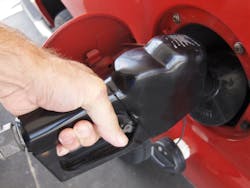After Lengthy Slide, Gas Prices Rise Nearing End To Summer Driving Season
Following a streak where the national retail average price of gasoline dropped on 54 of 55 days, pump prices have now increased on 12 of the past 17 days and each of the past six, AAA reports. The national average price for regular unleaded is $2.16 per gallon, which is four cents more than one week ago, but is two cents less than a month ago, 46 cents less than the same date last year, and the lowest price for this date since 2004.
Pump prices have been driven by crude oil prices surging more than 20 percent this month and refinery issues impacting production in some regions. Higher crude oil prices have come as the U.S. dollar has weakened and the Organization of the Petroleum Exporting Countries (OPEC) is reportedly considering production cuts to bolster prices. West Texas Intermediate crude oil is priced in U.S. dollars. As the U.S. dollar weakens, crude oil becomes relatively less expensive for those holding foreign currencies, which increases demand and puts upward pressure on oil prices. This upward momentum has been further supported by reports that OPEC members will again consider an agreement that would limit production in the face of the global glut of crude oil supplies that has more than halved prices in recent years.
Also influencing gasoline prices have been refinery issues that have exacerbated price increases in areas supplied by these facilities. This includes a number of refineries in the Gulf Coast that are undergoing unplanned maintenance as a result of flooding in Louisiana and refinery fire in Texas. Drivers in the Midwest and Central U.S. continue to see the most dramatic recent price movement as the impact of outages – including the BP refinery in Whiting, Ind. – has pushed prices higher. The facility is reported to be slowly coming back online, which could allow regional prices to drop back down.
While pump prices in the vast majority of states (42) have moved higher over the past week, domestic gasoline supplies remain high and oil prices remain relatively lower compared to recent years, meaning pump prices are likely to remain cheap through the rest of the summer and into the fall. Prices could even dip back below $2.00 per gallon once the summer driving season is complete and as many regions are allowed to transition to selling cheaper-to-produce winter-blend gasoline. However, a major market-moving event, like a hurricane or further increasing crude oil costs, could still offset this decline and temporarily drive pump prices higher. Full report.
